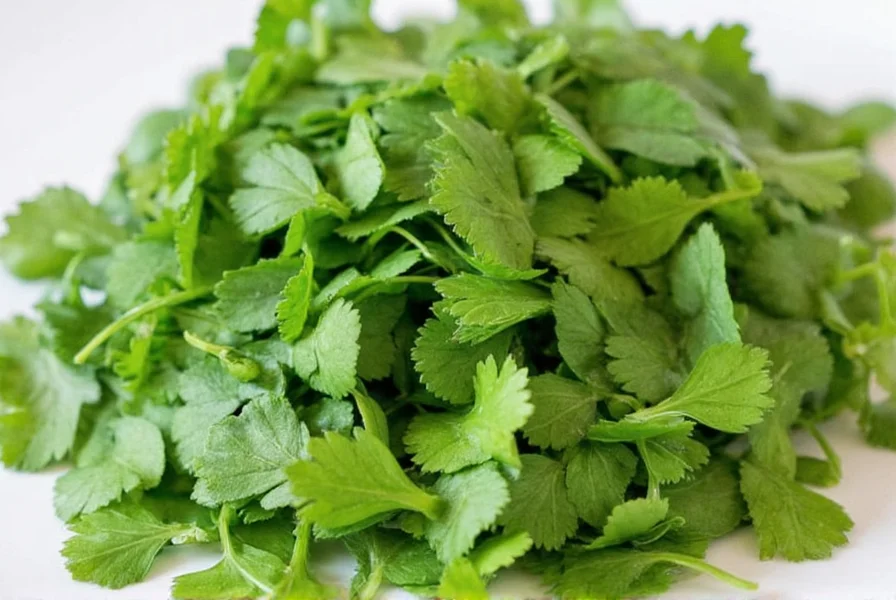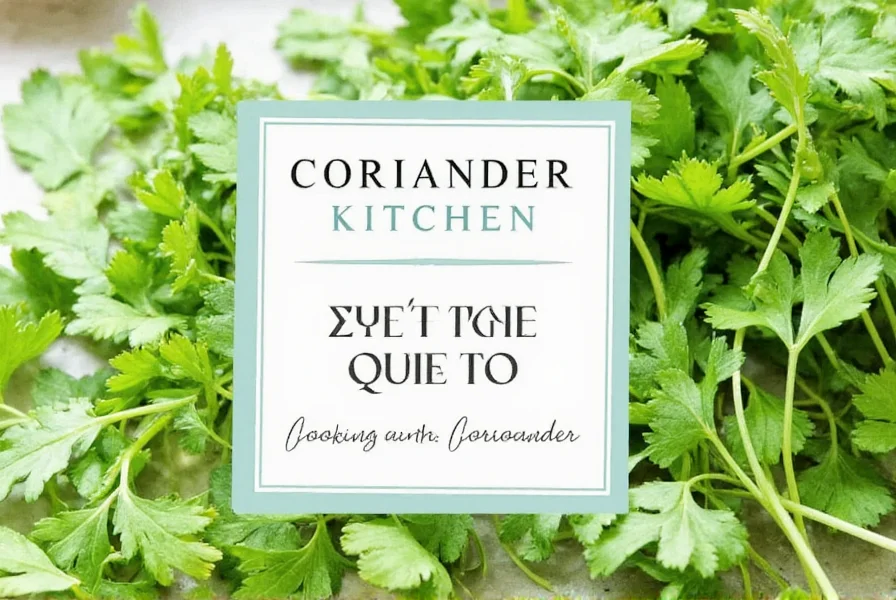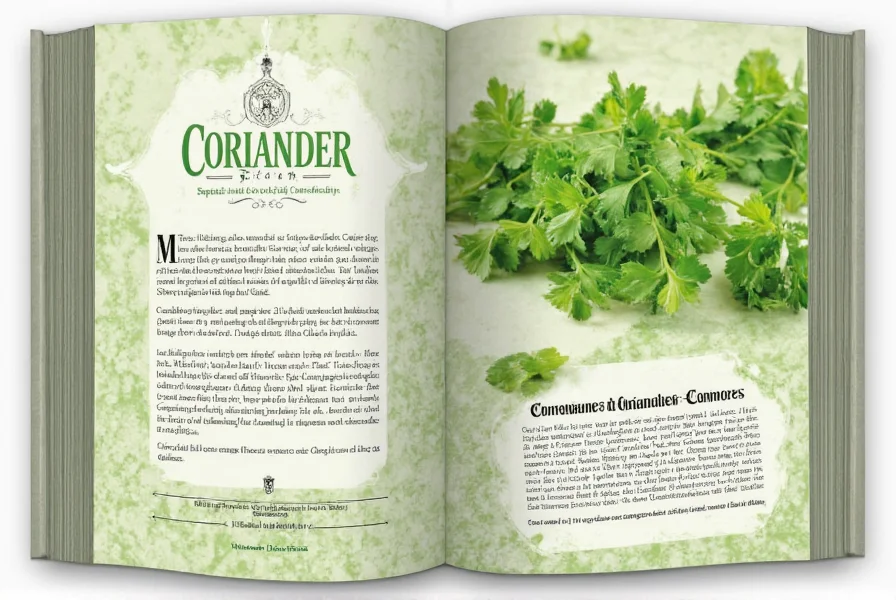Understanding how to properly use coriander in your kitchen transforms ordinary dishes into extraordinary culinary experiences. Fresh coriander leaves provide bright, citrus notes ideal for finishing dishes, while toasted coriander seeds offer warm, earthy undertones perfect for spice blends. The key difference between cilantro (fresh leaves) and coriander (dried seeds) often causes confusion, but mastering both elements elevates your cooking significantly.
Coriander Varieties and Their Culinary Applications
Coriander exists in multiple forms, each serving distinct purposes in the kitchen. Recognizing these variations helps you select the right type for specific recipes and cooking techniques.
| Coriander Form | Flavor Profile | Best Culinary Uses | Storage Duration |
|---|---|---|---|
| Fresh leaves (Cilantro) | Bright, citrusy, slightly peppery | Salsas, chutneys, garnishes, fresh salads | 3-5 days refrigerated |
| Dried seeds | Warm, earthy, lemony | Curry powders, pickling spices, baked goods | 6-12 months airtight container |
| Ground coriander | Milder, more diffuse flavor | Marinades, rubs, spice blends | 3-6 months airtight container |
| Coriander root | Intense, earthy, pungent | Thai curry pastes, broths, complex sauces | 1-2 weeks refrigerated |
Maximizing Flavor in Your Coriander Kitchen
Toasting coriander seeds properly unlocks their full potential. Heat a dry skillet over medium heat, add whole seeds, and toast for 1-2 minutes until fragrant but not browned. This simple technique enhances the aromatic compounds by up to 40% compared to using raw seeds. For optimal flavor extraction, grind toasted seeds immediately before use rather than purchasing pre-ground coriander.
Fresh coriander leaves should be added at the end of cooking to preserve their delicate flavor compounds, which degrade rapidly with heat exposure. When substituting dried coriander for fresh in recipes, use a 1:3 ratio (1 teaspoon dried = 1 tablespoon fresh) though the flavor profiles differ significantly.

Regional Coriander Kitchen Traditions
Coriander's versatility shines across global cuisines. In Indian cooking, coriander seeds form the backbone of garam masala and curry powders, often combined with cumin in a 2:1 ratio. Mexican cuisine features fresh coriander prominently in salsas and guacamole, where its citrus notes complement lime and avocado.
Middle Eastern dishes like falafel and za'atar rely on ground coriander for depth, while Thai cuisine uses both fresh leaves and roots in curry pastes. Eastern European pickling traditions incorporate coriander seeds for their preservative qualities and distinctive flavor in cucumber pickles.
Common Coriander Kitchen Mistakes to Avoid
Many home cooks make critical errors when working with coriander that diminish its culinary impact. Overcooking fresh coriander causes rapid flavor degradation, while improperly stored seeds lose potency within weeks. Another frequent mistake involves confusing cilantro and coriander seeds in recipes, resulting in flavor imbalances.
When using fresh coriander, avoid washing it excessively as water accelerates spoilage. Instead, gently mist leaves and store upright in a glass with an inch of water, covered with a plastic bag in the refrigerator. For dried seeds, purchase whole rather than ground whenever possible, as pre-ground coriander loses 60% of its volatile oils within one month.
Signature Dishes Featuring Coriander
Certain dishes showcase coriander's unique properties perfectly. Indian dhania jeera powder (coriander-cumin blend) forms the foundation of countless curries. Vietnamese pho relies on toasted coriander seeds in its broth for distinctive aroma. Mexican pico de gallo achieves balance through fresh coriander's bright notes.
For home experimentation, try making coriander pesto by substituting half the basil with fresh coriander leaves, or create a coriander-infused simple syrup for cocktails. Roasted vegetable dishes benefit from a sprinkle of toasted coriander seeds added just before serving.

Coriander Substitutes and Complementary Flavors
When coriander isn't available, suitable substitutes depend on which form you're replacing. For fresh coriander leaves, flat-leaf parsley with a squeeze of lime provides similar texture and citrus notes. Dried coriander seeds can be substituted with a blend of cumin and fennel seeds in a 1:1 ratio.
Coriander pairs exceptionally well with complementary flavors: cumin creates earthy depth, chili provides heat contrast, and citrus enhances its natural brightness. Understanding these flavor relationships helps you adjust recipes when working with coriander in your kitchen.
Frequently Asked Questions
What's the difference between cilantro and coriander in cooking?
Cilantro refers to the fresh leaves and stems of the coriander plant, featuring a bright, citrusy flavor ideal for finishing dishes. Coriander specifically denotes the dried seeds, which have warm, earthy, lemony notes best used in spice blends or toasted for enhanced aroma. They're from the same plant but offer distinctly different flavor profiles and culinary applications.
How can I keep fresh coriander from wilting quickly?
Store fresh coriander upright in a glass with one inch of water, like a bouquet, and cover loosely with a plastic bag. Keep in the refrigerator away from fruit (which emits ethylene gas that accelerates spoilage). Change the water every two days. Properly stored, fresh coriander maintains quality for 7-10 days rather than the typical 3-5 days.
Can I substitute dried coriander for fresh in recipes?
Yes, but with important considerations. Use a 1:3 ratio (1 teaspoon dried = 1 tablespoon fresh), though recognize the flavor profiles differ significantly. Dried coriander offers earthier, warmer notes while fresh provides bright citrus. For best results, add dried coriander early in cooking to allow flavor development, while fresh coriander should be added at the end to preserve its delicate aroma.
Why does my coriander sometimes taste soapy?
Approximately 20% of people possess a genetic variation that causes coriander to taste soapy. This isn't related to the coriander itself but rather how certain taste receptors interpret aldehydes present in the herb. If you experience this, try using coriander seeds instead of fresh leaves, as they contain different compounds. Toasting the seeds enhances their warm, citrus notes while minimizing any soapy perception.











 浙公网安备
33010002000092号
浙公网安备
33010002000092号 浙B2-20120091-4
浙B2-20120091-4